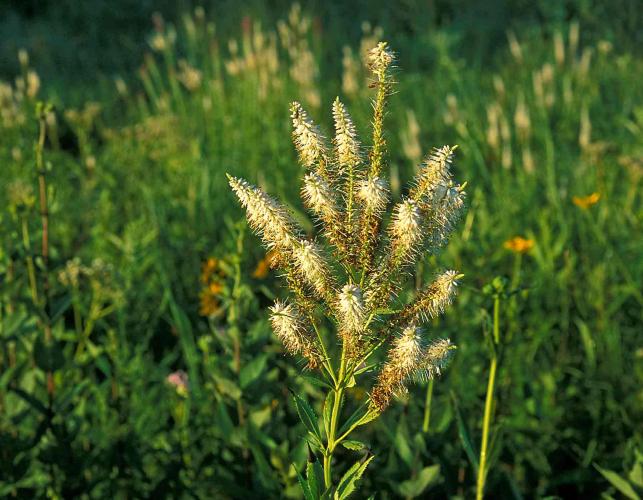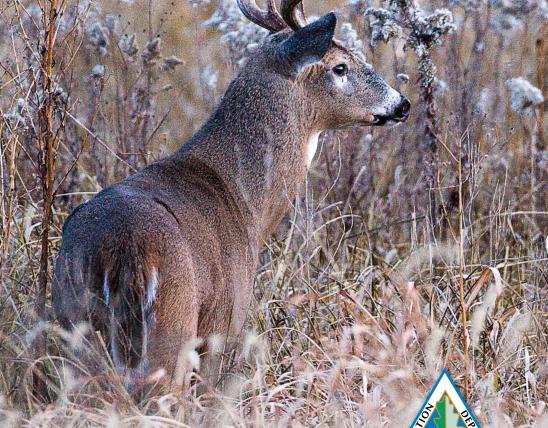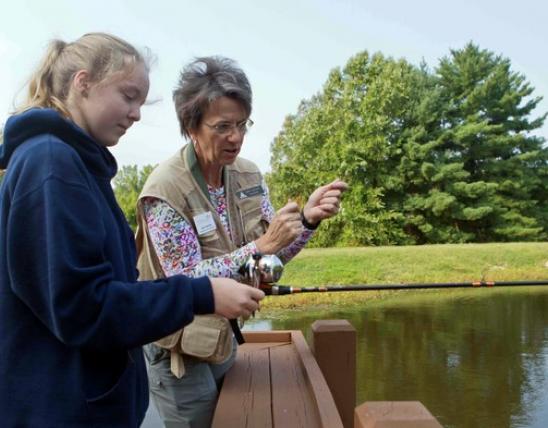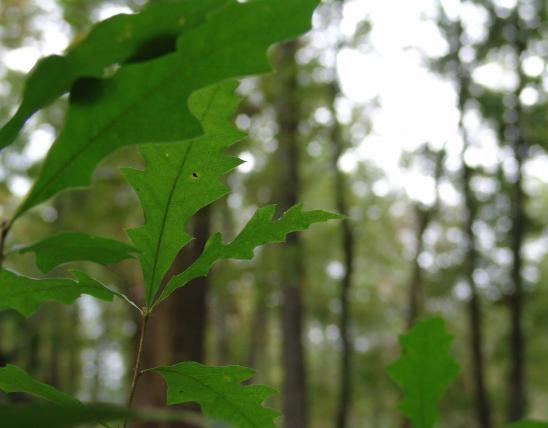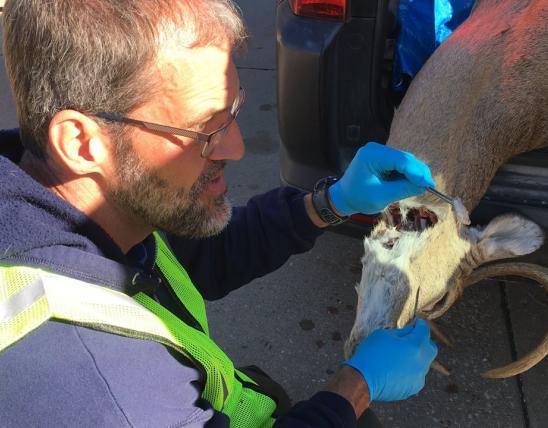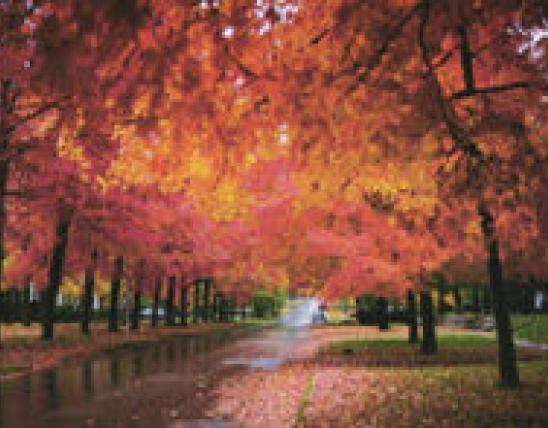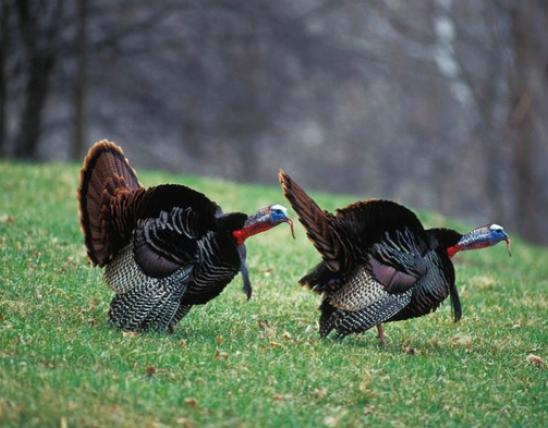
Tall, graceful perennial with a few erect branches. Flowers in terminal spikes arising from a common axis, the center spike larger. Individual flowers minute, tightly spaced, white, rarely pink; each a tube with 5 lobes; 2 stamens and a pistil protrude from the flower. Spent flowers turn brownish. Blooms June–September. Leaves smooth, in whorls, well spaced along the stalk, short-stemmed, ovate to narrowly lance-shaped, finely toothed.
Height: to 6 feet.
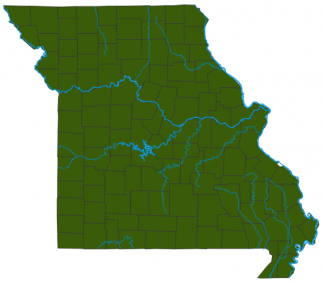
Statewide.
Habitat and Conservation
Occurs in open woods, wet fields and meadows, prairies, rights-of-way.
Status
This plant and many of its relatives used to be considered members of the figwort family, the Scrophulariaceae. In the early 2000s, botanists, using the relatively new tool of molecular (genetic) research, determined that the figwort family had included many groups having clearly separate genetic lineages. These groups are now treated as separate families. Many field guides still use the former classification system.
Human Connections
Many people are planting this native flower in their gardens. Culver’s root in the past was used medicinally (especially as a purgative). It is said to have been named for a Dr. Coulvert (or Culver), aparently an American physician of the late 17th and early 18th century.
Ecosystem Connections
Many types of insects, including bees, wasps, butterflies, and moths, are attracted to the sprays of flowers.
